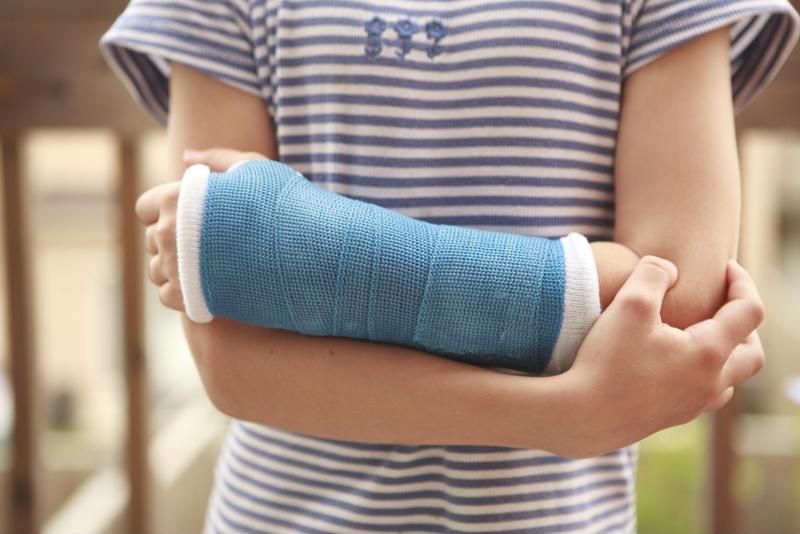The need for travel physical therapy services isn't limited to one age. Professionals in this field can have patients ranging from infants to seniors. During their careers, though, some physical therapists find they enjoy working with a particular age group. For travel physical therapist Andrea Bailey, she found helping kids to be the most rewarding of all and now spends her career working with adolescent patients. Learn more about physical therapist services for pediatric populations and her experience.
Andrea's story
Andrea didn't begin her career knowing she wanted to work with kids, but she always had a passion for physical therapy. In an interview with Aureus Medical, she reminisced about having an innate curiosity for learning how things worked. If something was broken, she'd take it apart to discover the problem and learn how to fix it. Then, there's her added enthusiasm for working with and helping people. Put those together, and physical therapy seemed like the perfect fit.
She also never thought travel therapy would serve as her career path. Going away to physical therapy school, however, showed Andrea just how much she loved to travel. She found that staying in one place just wasn't as exciting as seeing the world. To name a few states, she's been to Texas, Georgia, South Carolina and Nebraska. Travel physical therapy has created plenty of exciting adventures, like learning to swing dance in Dallas, visiting the beaches on the East coast and seeing the Blue Ridge Mountains.
It was while working as a resident assistant at a pediatric long-term care facility that she discovered her love for working with kids.
"I tried to keep an open mind as I went to different settings for my clinical rotations, but I did not find anything I liked as much!" she said.
"It is just helping the patient live the best life they can."
Why children need physical therapy services
When anyone – regardless of their age – is diagnosed with a condition that limits their mobility, they can turn to physical therapy services. As the American Physical Therapy Association explained, these professionals come up with treatment plans calling on techniques that reduce pain, prevent disability or further decline of function, and promote greater mobility. When travel physical therapists work with kids, they fulfill those roles in a way that meets the pediatric patient's needs.
Of course, these needs vary widely, as Andrea explained. She noted that many of her patients experience developmental delays. According to the APTA, this might involve working with kids who have autism or Down syndrome, as these disabilities may lead to slower-than-average progression in speech, self-care and motor skills. A physical therapist creates a plan to help the child be more mobile so he or she can play, socialize and participate in everyday activities.
Children aren't invincible (as much as they might like to think they are), which means Andrea also sees young patients overcoming injuries. According to Health Grades, 5- to 9-year-olds are prone to playground accidents, while physical therapists are more likely to see team sport-related injuries in those age 6 to 19.
Regardless of the injury, the goal is the same, explained Andrea.
"I could go on for a long time about the different levels and needs you might work with, but in the end it is just helping the patient live the best life they can at whatever level they are at," she said.

Andrea's tips for working with kids
There's no one-size-fits-all strategy for working with pediatric populations in physical therapy jobs, but in general, patience can go a long way. As Andrea explained, it's not easy telling a 3-year-old to sit down and do 10 sets of a certain exercise. You might have to repeat yourself several times if that's what it takes to have the child complete the task. After all, you can't just forgo a physical therapy regimen because an adolescent patient would rather be playing with his or her friends! Your influence is crucial to patient health and happiness.
That said, there are ways to make the appointment more entertaining, and Andrea said pediatric physical therapists must be willing to have fun. You may have specific goals for your patients to reach, but keep in mind there are multiple pathways to achieving those objectives.
"In order to have a child do certain things, it helps to incorporate it into a game or make it fun," Andrea explained.
For example, Advance Healthcare Networked discussed how physical therapists at the Cincinnati Children's Hospital Medical Center use suspension equipment to help young children with posture control. While sitting in these seats, they throw a beanbag back and forth with the physical therapist. They also guide pediatric patients through the superman stretch to strengthen their core. Pretending to be a superhero is a lot more fun than doing a plain old sit-up!
According to Andrea, there's nothing quite as rewarding as watching a child get excited about accomplishing a goal. As someone working in travel physical therapy, you can enjoy this fulfilling career path, too. Consider getting some experience first by shadowing at a pediatric clinic or completing a clinical rotation in a pediatric setting as a student.


Physical therapy sounds like good things to be aware of. I didn’t think about how kids could need physical therapy to prevent further damage to them. I wouldn’t want my kid to have an injury or problems because of and untreated old injury.
I am planning to work as a PT once I graduate and as far as I know, I’ll sign up for a travel physical therapy job. Thank you for these valuable tips.
I liked when you said that physical therapists use techniques that reduce pain and promote greater mobility in their patients. I can see how anyone with an injury that affects their mobility would benefit from a therapist as they would find the best way to help them regain the use of their muscles or injured part. I will make sure to find a good therapist to help with my recovery. Thank you for the post.
This article was very informative, thank you for SHARING your knowledge
Thank you for mentioning how some physical therapist specializes in a specific age group. It is important to remember that learning as much as you can about the therapist you want to hire can help you get the best results and regain your mobility. My son got his ankle sprained and we want to help him get back on his feet as soon as possible, so I’m glad I found your page.
I really love how you said that there’s no one-size-fits-all solution for working with kids. Everybody learns differently and is motivated by different things. I’m going to keep that in mind when I choose a therapist for my daughter.